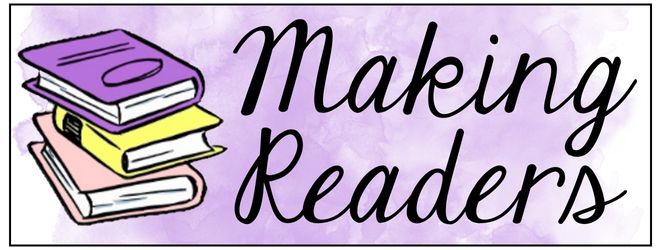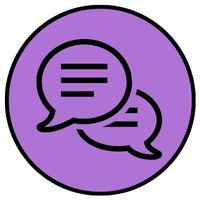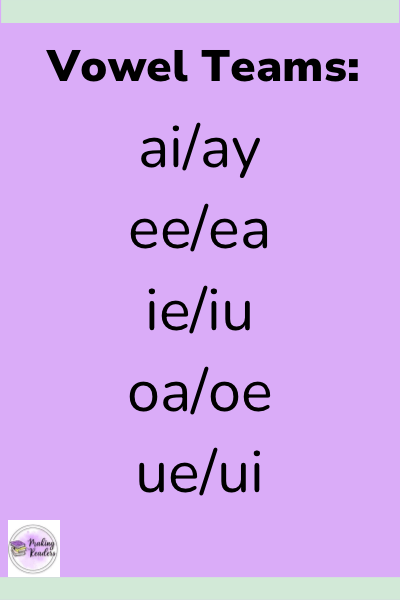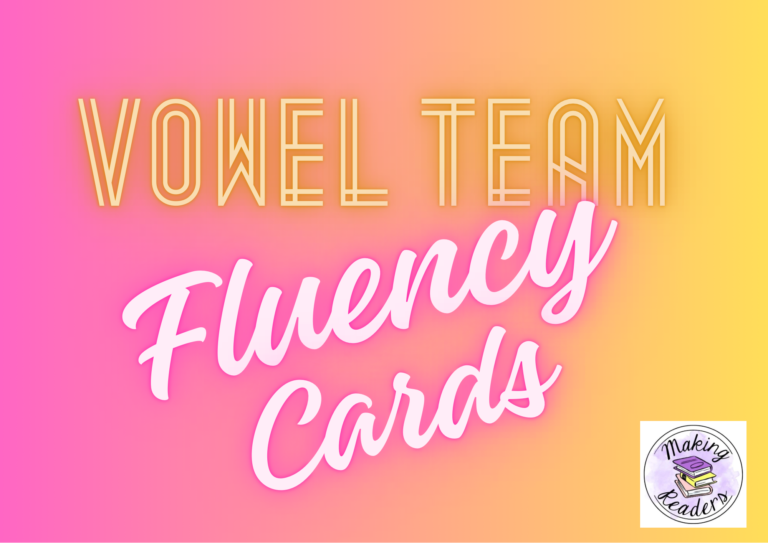Vowel teams are combinations of two vowels that work together to create a specific sound. Teaching students about vowel teams is essential for building their reading and spelling skills. In this blog post, we will explore effective strategies for teaching vowel teams to help students become more confident and proficient in decoding words that contain vowel teams.
Introducing Vowel Teams
Start by introducing students to the concept of vowel teams by explaining that vowel teams are pairs of vowels that work together to produce a unique sound. Stress the fact that two letters are making ONE sound. Provide visual examples of common vowel teams such as “ea,” “ee,” and “ai.”
Visualizing Vowel Teams
Visual aids can be valuable tools for teaching vowel teams. Create posters or anchor charts that display all of the different vowel teams along with the corresponding sound they make. Use different colors or bold fonts to highlight the vowel teams in words. Encourage students to refer to these visual aids when decoding words with vowel teams.
Explicit Word Study
Help students understand the different ways vowel teams can be decoded and used in words by engaging in explicit word study. Please be advised what I am about to tell you to do is very time consuming but also very worth it! I have taught vowel teams for most of the years that I have been a Reading Specialist. The best method is to teach all of the long vowel sounds separately over a week’s time with another week added on to review all of the vowel teams together. I know what you are thinking, and yes, that means this unit will take approximately SIX WEEKS. Remember the Science of Reading methods require explicit and systematic instruction and this is the best way for students to retain the decoding rule and the sounds of all of the vowel teams.
As you teach each vowel team, be sure to provide examples of words that contain vowel teams and ask students to identify the the vowel team and the sound that vowel team makes within each word. Why is this important you ask? You want your reader to do this with automaticity to build their fluency. Then they can do this when they are reading other text in other subject areas where they can then focus on building their vocabulary and comprehension skills.
My vowel team rule
I have found that many primary teachers teach their students this saying when they are teaching them how to decode vowel teams:
“When two vowels go a walking, the first one does the talking.”
I am not a fan of this saying. I feel that it can be confusing. For example, what exactly does the “first one” say? Do young kids know that “go a walking means that there are two vowels next to each other? I have found that my third grade students know that rule by heart but have no idea what it means or how to apply it. So I teach them a different saying. It goes like this:
“When two vowels are next to each other, the first letter tells you its name and the second one stays quiet.”
This is a way that I incorporate the SOR into my instruction by being more explicit!
The Next Step
Now that you have taught your readers the rule, got them to visualize words with vowel teams in them, explicitly taught each vowel team for approximately six weeks, what is next? It is time to build that skill with lots of practice. The following are some examples of ways that you can do this.
Incorporate Word Sorts to Reiterate Instruction
Word sorts are an effective hands-on activity that helps students recognize and categorize words with different vowel teams. Provide students with a set of word cards, each containing a word with a specific vowel team. Ask students to sort the cards into groups based on the vowel teams they contain. This activity helps reinforce their understanding of vowel teams and their corresponding sounds. Click here to access a FREE word sort for vowel teams.
Using Boom Cards
When teaching vowel teams, you need to engage students in decoding exercises that specifically target words with vowel teams. You can create worksheets or online activities that include words with different vowel teams. However, I like to use Boom Cards for this. There is an huge selection to choose from and worth every penny! I have also found that student engagement increases dramatically from using Boom Cards.
Boom Cards also encourage students to sound out each word and identify the vowel team and corresponding sound for each word they read.
Reading Aloud
Reading aloud is a valuable practice for developing fluency and comprehension skills. Select decodable books or decodable passages that contain more words with vowel teams in them. Model proper pronunciation and emphasize the vowel teams as you read. Encourage students to follow along and identify the vowel teams in the text. I usually do this by having the students highlight the vowel teams with a highlighter of their choice.
Incorporating Multi-Sensory Techniques
For students who may benefit from multi-sensory instruction, incorporate various techniques to reinforce vowel teams. Use manipulatives such as letter tiles or magnetic letters to build words with vowel teams also known as orthographic mapping. I like to use these digital letter tiles from UFLI because they have tiles with the vowel teams on them. I just add the link in my Google Classroom and students use their touch screens to manipulate them. (Clean up is much easier this way!) Encourage students to say the sounds as they build the words. Additionally, you can incorporate kinesthetic activities like air writing or tracing vowel teams to enhance students’ learning experience.
Using a Sound Wall
Teachers need to provide opportunities for students to practice their decoding skills in vowel teams during different parts of the school day. I have a sound wall next to my classroom door and students practice their vowel teams as they are lined up to leave the classroom. I use the sound wall from UFLI in my classroom. Overall, it is very useful and it is my favorite price and yours- free! Click here to access this wonderful resource.
Assessment and Feedback
Be sure to do regular assessments or progress checks while you are teaching this unit. This is a LONG unit to teach! It is crucial for monitoring student progress and providing feedback or reconstruction when needed. You can create assessments that specifically evaluate students’ ability to decode words with vowel teams. Don’t have time to create your own assessment?
You can also use my FREE vowel teams flashcards (link below to my TPT store) to use to assess your child or your students.
Want your student or child move to decoding vowel teams in text?
Often students learn to decode vowel teams in isolation and we get all excited because we THINK they have mastered the skill but then, we give them a text and find they are not decoding the vowel teams correctly. There is a good reason for this. Readers need to be scaffolded into reading vowel teams in a text. They cannot just jump right in! That would be like us diving into the deep in of a pool after learning how to float in water. We need to guide our readers by having them first read words in isolation, then read phrases, then sentences and then text. This is what I normally spend the sixth week of instruction doing along with the review of all of the vowel teams. I have created an amazing resources to help you with this. Click on the picture below to visit my TPT store to see it!













